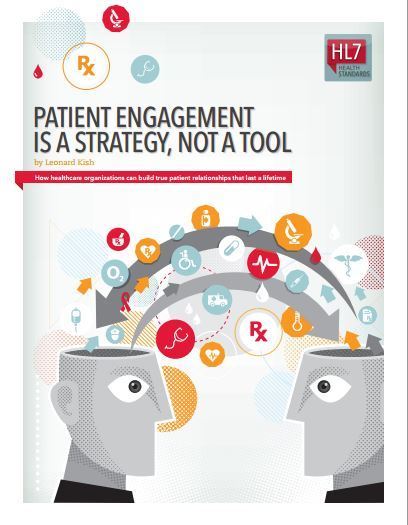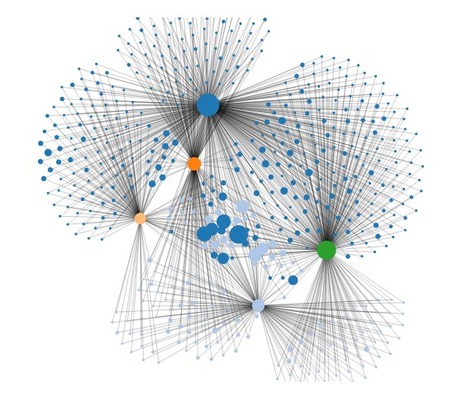he human brain may be nature’s finest computer, but artificial intelligences fed on big dataare making a convincing challenge for the crown. In the realm of healthcare, natural language processing, associative intelligence, and machine learning are revolutionizing the way physicians make decisions and diagnose complex patients, significantly improving accuracy and catching deadly issues before symptoms even present themselves.
In this case study examining the impact of big data analytics on clinical decision making, Dr. Partho Sengupta, Director of Cardiac Ultrasound Research and Associate Professor of Medicine in Cardiology at the Mount Sinai Hospital, has used an associative memory engine from Saffron Technology to crunch enormous datasets for more accurate diagnoses. Using 10,000 attributes collected from 90 metrics in six different locations of the heart, all produced by a single, one-second heartbeat, the analytics technology has been able to find patterns and pinpoint disease states more quickly and accurately than even the most highly-trained physicians.Dr. Sengupta explained his ongoing work with big data analytics to HealthITAnalytics, and discussed the impact such technologies can have on cardiology patients and their outcomes.What were the underlying medical issues you were trying to solve with this study?One of the most commonly ordered diagnostic tests in cardiology is the echocardiogram. We were amazed at the amount of information that was coming in during each patient consultation, so the biggest challenge was how to make the information, which is extremely rich, easily understandable and use it in real-time in patient care scenarios. Working with Saffron, we decided that we will look into a scenario which is extremely complex which usually requires a lot of expertise, and it usually is associated with fairly complex sets of information.We decided to do a pilot test with two diseases: cardiomyopathy, which affects the heart, and pericarditis, which masquerades as if the heart is involved, but actually the heart muscle is not involved. Both diseases present with heart failure, and patients are very complex in their assessments. If you make the correct diagnosis the treatments are very disparate, very different. For pericarditis, you would do a surgery, whereas if it’s cardiomyopathy, it’s a different course. It’s medical management or a heart transplant.Misdiagnosis of these conditions is a fatal error, because if you make the wrong decision, you’re going to send a patient who’s going to be treatable by surgery to get a heart transplant and vice versa. If you open up a patient because you think they have pericarditis, and then you have to close the patient because the patient didn’t have the thickening of the membranes around the heart, that’s expensive for the hospital and puts the patient at an unnecessary risk of complications. So that’s why we use this particular technology on these diseases, because the risk of not diagnosing this disease properly is immense.How can clinical analytics supplement human intelligence to identify patterns and make diagnoses?For the study, we took a lot of the ultrasound information, which is the first step for diagnosing these patients. We took the information, which is extremely complex and started working on that using the natural intelligence platform to see if we could come up unique characterization of the disease, so that the information can be clustered for pattern recognition. You use a lot of intuitive skills to go through these datasets. I was interested in seeing how processing this data through clinical analytics can provide better decision support.The problem is that the data is scattered everywhere. It’s in the EMR, but everything is still in siloes. So either you have to make an effort to look in the EMR, then look into the e-measures, which may be existing on another system, look at the PACS system, and the himself patient is somewhere else. So, they’re all in different locations. How do we take all the information just coming from different sources and merge them together, so that we can apply it right away to the patient in real-time? That’s what we are currently focused on.Let’s say I just analyzed an echocardiogram of a patient and I track the information into am Excel file. You open that Excel file, and it will have about 30 columns and 50 to 60 rows. What we do right now is go row by row, and it’s very painful. But the analytics engine takes an entire dataset all at once, and then comes out with these rich associations. Based upon its previous learning, using its associative memory capabilities, it can tell that this dataset looks like this disease, and that dataset looks like another disease.This kind of an application can be done for any scenario. For example, diabetes can produce some very early changes in the heart muscle which the patient doesn’t even know about. He’s completely asymptomatic. You might have a signal present in this big data, but you might not be able to discover it on your own. You might not even really be looking for it, but when you process it through a complex analytics engine, you might be able to come up with some kind of signal that will show the early disease state.Diseases come in clusters, so heart disease, cancer, Alzheimer’s, they don’t come independently. They all together in one given patient, so my hope is that in future we will be able to take all the risk factors, which are common for these diseases, which are growing to epidemic proportions, and we will be able to deliver forecasting models based upon them.That’s kind of the vision. I think it would be really terrific to have a forecasting model, so then this patient has such risk factors, goes into the hospital for, let’s say a knee surgery, what are his chances he’s going to develop a heart attack when he comes out of the surgery? That’s the kind of the risk modeling we’ll be very interested to develop in the future.After using the clinical analytics engine to examine the data, what results did you find?In the initial pilot phase, when I did my own statistical algorithms, we had about 73% ability to differentiate the two diseases. But when the initial pilot run happened, we were very pleased to see that there was a discrimination of 90% between the two datasets and without any human intervention. What that means is that the highly complex analyses that were done produced a discrimination which exceeded human ability to diagnose the two conditions. Having said that, you have to be extremely cautious, but it’s very exciting that machine learning and learning intelligence platforms can reach the ability to do this differentiation, if not exceed it.Related White Papers:Webcast: Gain Deeper Insight into your EMR with Care Systems Analytics from VMwareActionable Analytics: 10 Steps to Improve Profitability and Patient ExperienceImprove Outcomes with the VMware Care Systems Analytics SolutionPredictions for Big Data in Large and Small PracticesHL7 Survival GuideBrowse all White PapersRelated Articles:NIH to boost role of genomics in research, clinical analyticsGenomics, big data can thrive through CDS, analytics tools2.5 petabytes of centralized cancer data to accelerate genomicsNew law would increase access to Medicare data for analyticsHow big pharma uses big data to develop better drugs
Via
nrip,
dbtmobile



 Your new post is loading...
Your new post is loading...













Simple consumer techonology